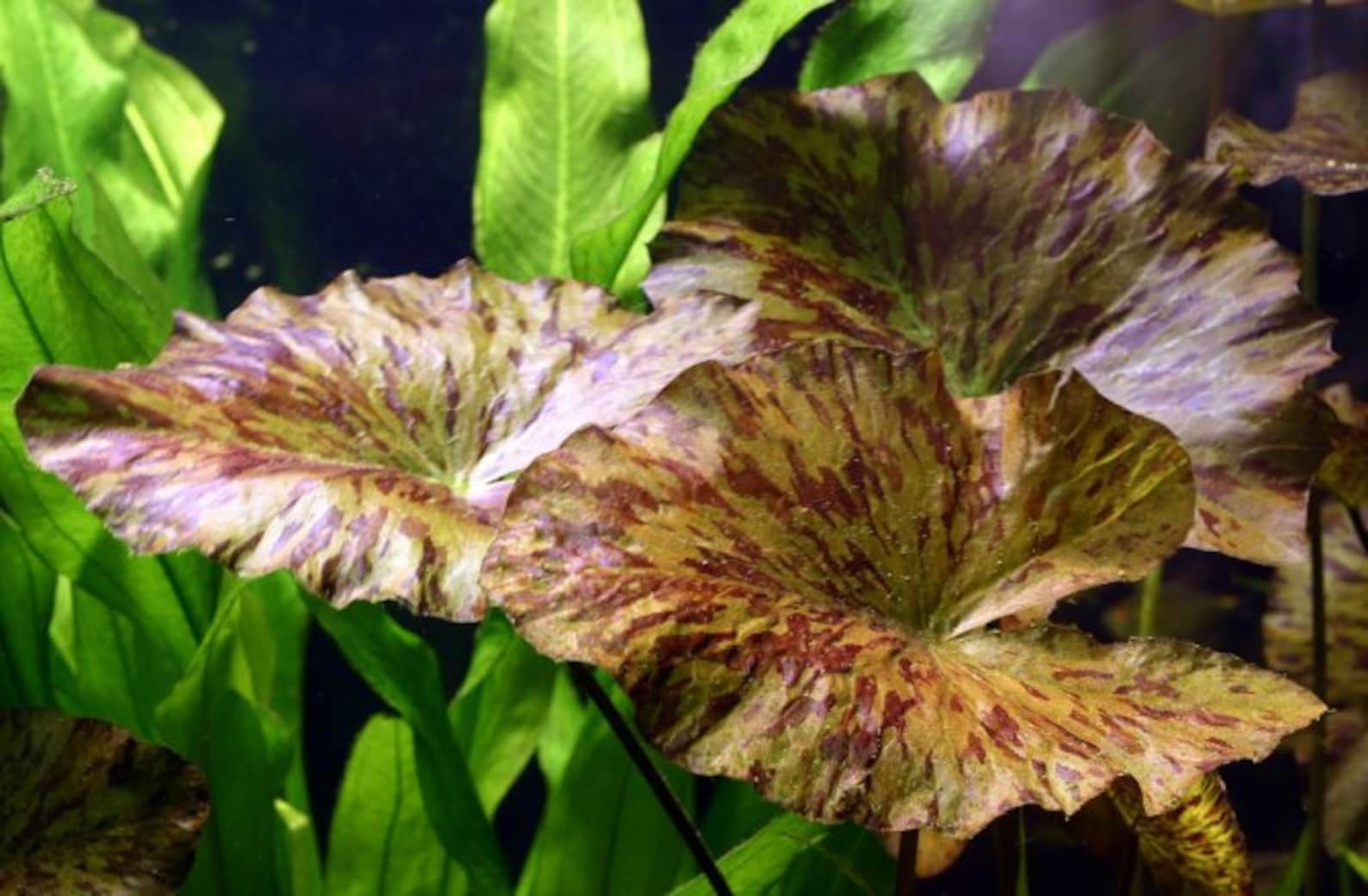The Red Tiger Lotus plant, an aquatic marvel with a captivating presence, embarks us on an enthralling voyage through the realms of botany, ecology, and human ingenuity. Its vibrant hues, intricate structures, and ecological significance weave a tapestry of wonder, inviting us to delve into its captivating story.
With a scientific classification that places it within the genus Nymphaea and the family Nymphaeaceae, the Red Tiger Lotus plant stands out as a botanical masterpiece. Its leaves, an exquisite display of nature’s artistry, exhibit remarkable variations in shape, size, and color, ranging from vibrant greens to deep reds and purples. Its reproductive structures, including the intricate morphology of its flowers and the efficient mechanisms of seed dispersal, reveal the plant’s remarkable adaptations to its aquatic environment.
Taxonomy and Botanical Characteristics: Red Tiger Lotus Plant

The Red Tiger Lotus, scientifically classified as Nymphaea lotus var. rubra, belongs to the family Nymphaeaceae. This aquatic plant is renowned for its captivating foliage and exquisite blooms.
Morphologically, the Red Tiger Lotus exhibits distinct features. Its leaves, arranged in a rosette pattern, are ovate to elliptic in shape, with wavy margins and a prominent central vein. The leaves range in size from 10 to 30 centimeters in length and 5 to 15 centimeters in width. Their color varies from deep green to reddish-brown, adorned with striking reddish-purple spots or stripes, giving rise to the plant’s common name.
The reproductive structures of the Red Tiger Lotus are equally remarkable. The plant produces solitary flowers that emerge from the center of the rosette. Each flower consists of numerous petals, usually 12 to 20, arranged in multiple whorls. The petals range in color from white to pale pink, with a distinctive yellow center. The flowers are fragrant and bloom from mid-summer to early fall. After pollination, the flowers develop into spherical seed capsules containing numerous tiny seeds. The seeds are dispersed by water currents or animals, ensuring the plant’s propagation.
Cultivation and Care Requirements
Cultivating Red Tiger Lotus plants is not complex, but specific care requirements must be met to ensure their optimal growth and vibrant coloration. These requirements include proper soil conditions, adequate lighting, and appropriate water management.
Soil Conditions
Red Tiger Lotus plants thrive in nutrient-rich, well-draining soil. A mixture of loam, sand, and organic matter, such as compost or peat moss, provides an ideal growing medium. The soil should have a pH range of 6.5 to 7.5, which is slightly acidic to neutral.
Light Requirements
These plants require bright, indirect light to maintain their vibrant foliage. They can tolerate partial shade, but prolonged exposure to low light conditions can result in stunted growth and pale coloration. In outdoor environments, they prefer a location that receives morning or late afternoon sun.
Water Management
Red Tiger Lotus plants require consistently moist soil, but they do not tolerate waterlogged conditions. Water the plant thoroughly when the top inch of soil feels dry to the touch. During the growing season, fertilize the plant monthly with a balanced liquid fertilizer.
Propagation
Red Tiger Lotus plants can be propagated vegetatively through division or stem cuttings. Division involves separating the plant’s rhizomes, which are underground stems. Stem cuttings can be taken from healthy stems and rooted in water or a moist growing medium.
Pest and Disease Control
Red Tiger Lotus plants are generally pest- and disease-resistant. However, they can be susceptible to aphids, spider mites, and mealybugs. These pests can be controlled using insecticidal soap or neem oil. Fungal diseases, such as leaf spot and powdery mildew, can be managed with fungicides.
Ecological Significance and Uses

Red Tiger Lotus plants play a significant ecological role in aquatic ecosystems, contributing to water quality and providing habitat and food for various organisms. They are known to remove excess nutrients from the water, such as nitrates and phosphates, which can contribute to algal blooms and eutrophication. Additionally, their dense root systems help stabilize sediments, preventing erosion and providing shelter for aquatic invertebrates and small fish.
Cultural and Historical Significance, Red tiger lotus plant
Red Tiger Lotus plants have a rich cultural and historical significance in various regions around the world. In ancient Egypt, they were associated with the sun god Ra and were often used in religious ceremonies and rituals. In China, they are considered a symbol of good luck and prosperity and are often grown in ponds and gardens. In India, they are known as “Kamal” and are revered as sacred plants in Hinduism and Buddhism.
Medicinal and Ornamental Uses
Red Tiger Lotus plants have been used for medicinal purposes in traditional medicine for centuries. The leaves, flowers, and roots are believed to possess various healing properties, including anti-inflammatory, antioxidant, and antimicrobial effects. In modern medicine, extracts from the plant are being investigated for their potential in treating conditions such as cancer, diabetes, and Alzheimer’s disease.
Ornamentally, Red Tiger Lotus plants are prized for their striking foliage and vibrant flowers. They are often grown in water gardens, ponds, and aquariums, where they add a touch of color and beauty to the aquatic environment. Their adaptability to different water conditions makes them a popular choice for both novice and experienced gardeners.